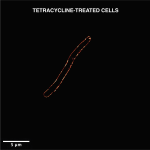
Our body is home to a large number of microbes on which our health depends. Disruption of the gut microbiome, which can happen with the use of antibiotics, affects not only our digestion but also our mental health. It is important, therefore, to understand how microbial communities survive, and devise ways of restoring them if they are perturbed.
In a recent study, researchers led by Narendra Dixit in the Department of Chemical Engineering and the Centre for BioSystems Science and Engineering have developed a new method to efficiently predict the compositions of microbial communities. The study was performed in collaboration with Unilever R&D.
A major challenge in such prediction has been the large number of interactions between the microbes present, which determine the compositions of microbial communities but remain difficult to unravel. In the new method, the researchers developed a way to subsume a majority of the interactions into a few, effective interactions, which were easy to unravel and, at the same time, facilitated accurate prediction of community compositions. The method dramatically reduces the effort in deciphering the interactions and enables the study of much larger microbial communities than currently feasible.






